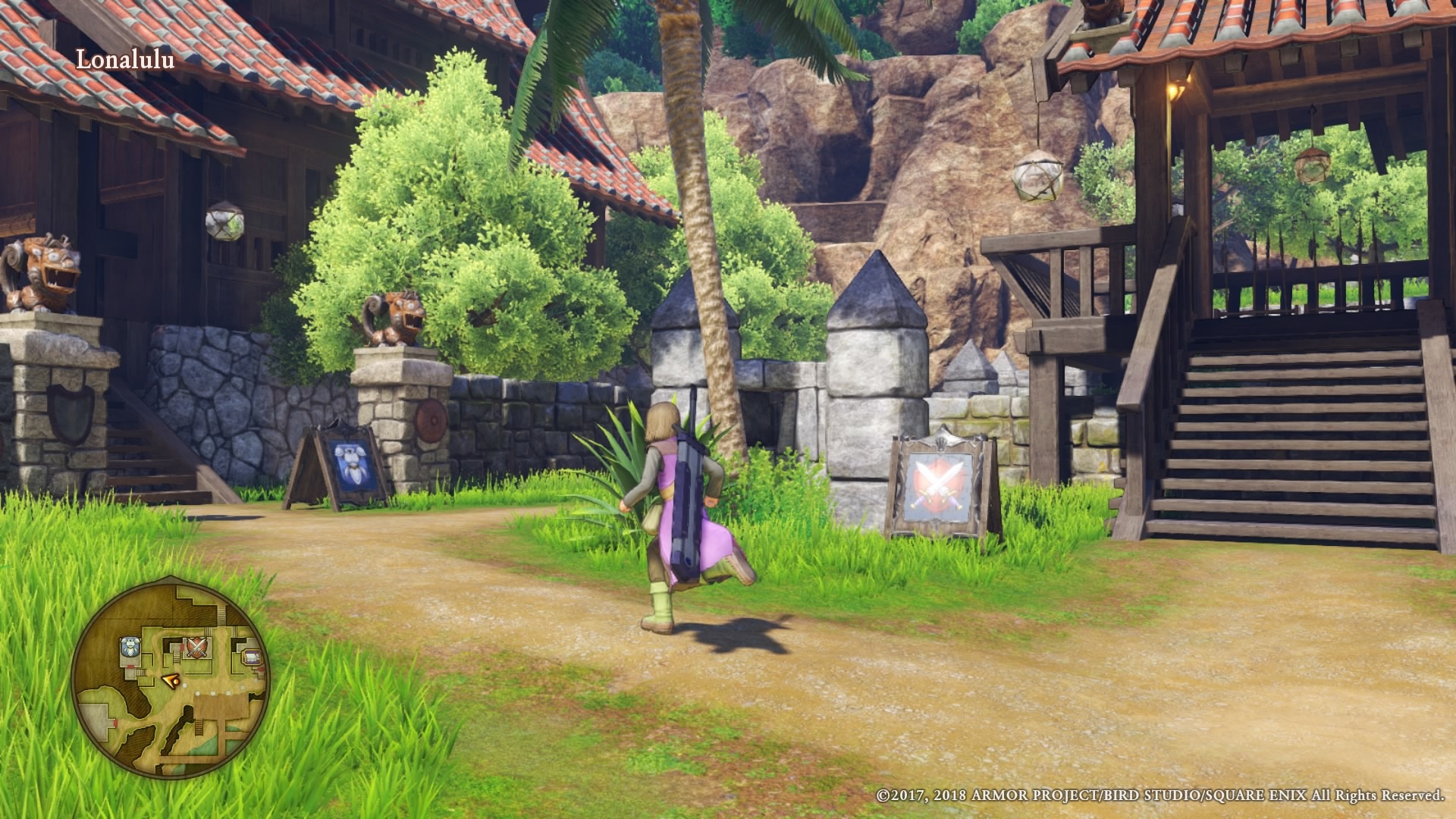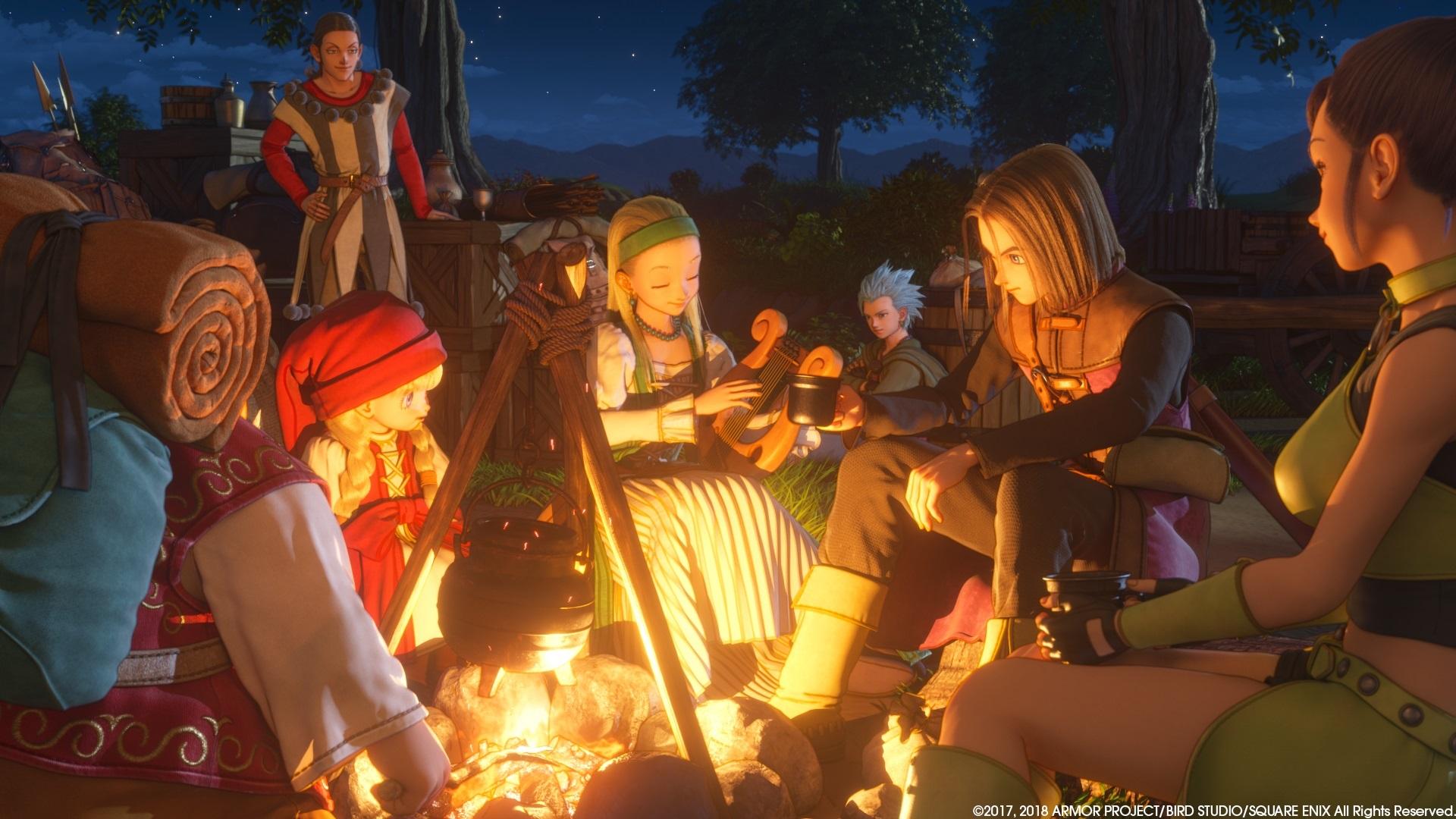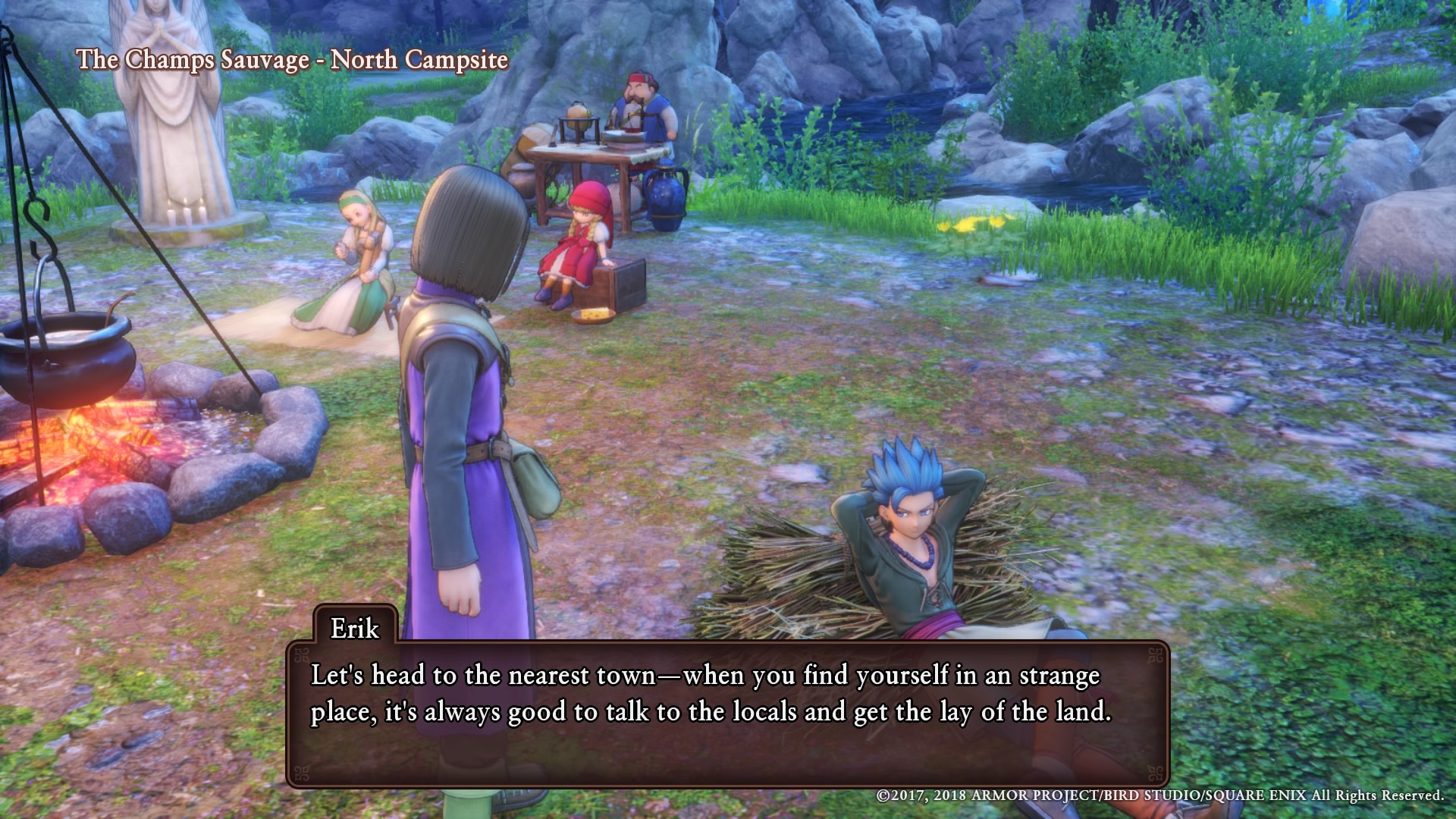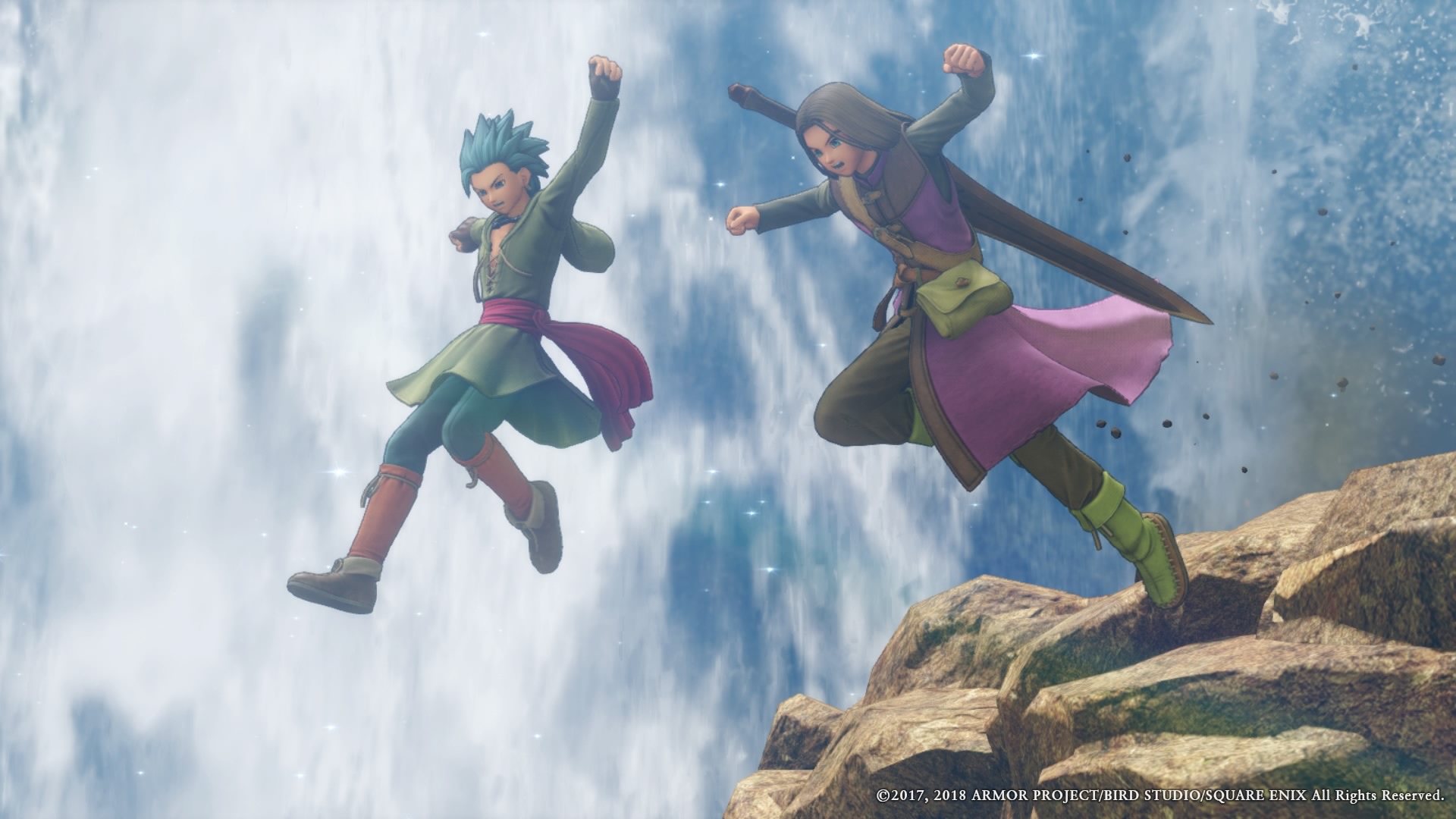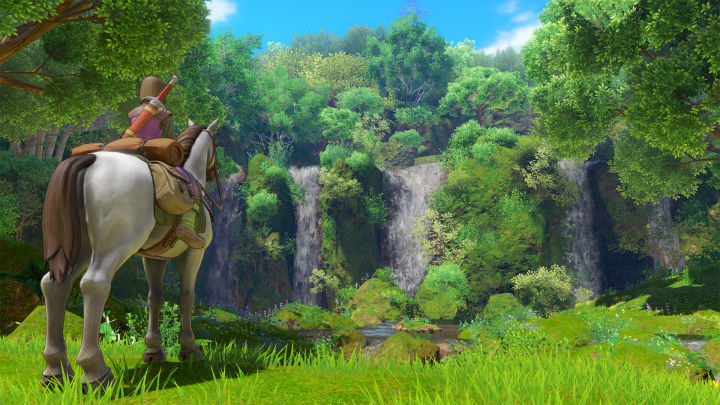Platforms:
PS4, PC
Released:
September 4, 2018
Publisher:
Square Enix
Developer:
Square Enix
Dragon Quest has, for a long time, been one of my absolute favourite video game series. An old-school JRPG that in my opinion really set the standard for JRPG’s moving forward, the game has always featured memorable characters, outstanding monster design, a catchy soundtrack and refined, turn-based combat. There’s a reason that new versions of the popular series only release in Japan on a Saturday, to prevent its millions of fans from calling in sick to play it. Dragon Quest XI: Echoes of an Elusive Age could very well be the best Dragon Quest game ever made, but newcomers might find its old-school sensibilities a little difficult to digest.
The franchise has often attempted to appeal to a Western audience, its closest effort being Dragon Quest VIII: Journey of the Cursed King on PS2. That was the last home console Dragon Quest to make it over here back in 2006, with sequels (and remakes) featuring heavily on the 3DS, while only Japan got the online-only MMO Dragon Quest X. In that sense, Dragon Quest XI: Echoes of an Elusive Age has been a long time coming and an incredibly long wait for fans. Lofty expectations, indeed.

A story built around your main silent character, the Luminary, the narrative features time travel, a range of witty characters to join your party, a world in danger and other tropes of the genre. Despite the by-the-numbers storyline (you’re the hero and you have some unknown special abilities that will save the world somehow!), what makes Dragon Quest stand out and what has always made it stand out is the writing of the characters and the world that feels truly lived-in.
Each town you visit is filled to the brim with its own personality, which comes from the look and feel but also from its varied residents. While they may look similar, it’s the dialogue that is fleshed out and different, including different accents and one town in particular that talks only in Haiku. I genuinely enjoyed seeing each new town, talking to people and learning about their plight. There’s an interconnected feeling that is subtle, but present if you’re paying attention; you’ll hear about a distant relative from one person and later in the game stumble across them in a side-quest. It makes the 60-80 hour campaign digestible when it all comes off as so relevant and thoughtful.
One of the best things about Dragon Quest XI is the monster design, now in glorious, crisp and colourful HD on PS4. They’re kooky, creative and look just excellent here; there’s a reason that these monsters are so iconic, including the slimes that even got their own video game spin-off. Not just the look but also the way in which they’re animated. They really come to life, with every attack and reaction. Even the way they faint when defeated is different for every creature. Turn-based battles are triggered only when you choose to fight them out in the world, and finding new creatures to fight and see what their moves were made new monster discoveries all the more enticing.
“…opens up a whole different layer of special moves that can be a game-changer…”
At its core, Dragon Quest XI features a battle system that initially comes off as feeling a little dated, I’ll admit. Turn-based combat has taken a backseat in recent years, though there are some recent RPG’s that have definitely stood out as strong cases for how it can work so well. It allows for thought with each move, and I think the issue with the early stages is that often combat doesn’t require more than pressing “attack” and maybe the odd heal.
It even feels more hands-off initially as the first character to join your party is initially set to do their own thing based on the situation. This doesn’t work terribly and you can adjust the tactics, but changing the setting so that your party follows your specific commands at all times provides much more control (the kind of control I’m used to in Dragon Quest), allowing you to be very precise with each strike, each magic attack and each special ability. This becomes even more important when you increase your party to four, as the combination of characters and their styles are better to be managed closely.
There are also plenty of wrinkles to combat that keep things engaging and rarely repetitive. Different status effects, the way certain enemies interact with each other on the battlefield and the special attacks once you “Pep Up” add to things significantly. Randomly triggered during battles, when your hero and his fellow party members pep up in unison, it opens up a whole different layer of special moves that can be a game-changer and life-saver in difficult battles. It makes the stakes higher as you choose how to best use these ultimate abilities that are only available for a limited time-frame.
Grinding has historically been a big part of Dragon Quest, and potentially the same can be said for Echoes of an Elusive Age. It’s less prominent as battles out in the world are optional, but if you avoid the opportunity to grind a bit then you’ll find yourself severely challenged by the bosses that you encounter as you progress the story. If you’re looking for that kind of unforgiving difficult then maybe you’ll be happy to do this, but I definitely found the need to take advantage of every battle opportunity I came across so that I was strong enough to take on the tougher beasties.

Crafting is also back, another way to earn stronger weapons and armour. Littered throughout the world are books that must be found, filled with recipes that can be used in the Fun Sized Forge when you set up camp. A surprisingly deep mini-game occurs where you try to forge effective gear out of your found materials and recipes with different kinds of stat boosts; but if you’re not interested in that side of it, you can always just sell whatever you collect and peruse the various shops you come across instead.
Exploring the world to find said materials is always a pleasure too. You’ll always be rewarded for going off the beaten track if you’re searching for more loot, making every corner of the world worth investigating. While the main storyline itself is linear in terms of the order of events, Dragon Quest XI has an aura that always inspires you to search for something special, making it all the more satisfying when you do acquire something rare or pivotal to your next creation.
Riding monsters to access new areas, solving puzzles and mysteries by observing flashbacks and exploring the world on horseback are just a few of the newer additions that kept me grinning and coming back for more, along with other quality of life improvements like the removal of random battles and Auto-Save when you’re changing areas (but not within dungeons). While it may not bring in new fans, it’s certainly catering awesomely to the old ones who are looking for the most refined Dragon Quest experience they can get their hands on.
Positive:
- Engaging writing and characters
- Vibrant, gorgeous world to explore
- Tried-and-true combat mechanics
- Gigantic adventure fans will adore
Negative:
- May be too old-school for some players
- Grinding is there, love it or hate it
Dragon Quest XI: Echoes of an Elusive Age may very well be the best Dragon Quest ever made, and therefore one of the best JRPG’s of all time. It’s certainly in the running for being the most gorgeous, with lush environments, incredible monster design and detailed, varied towns to explore. But its foundation is the battle structure which, in my opinion, has been refined and tweaked to a point where it’s incredibly accessible but still incredibly complex as your party expands. It’s a perfect blend of old-school mechanics with a satisfyingly modern style that makes this stand out as one of the most enjoyable RPGs ever made.


